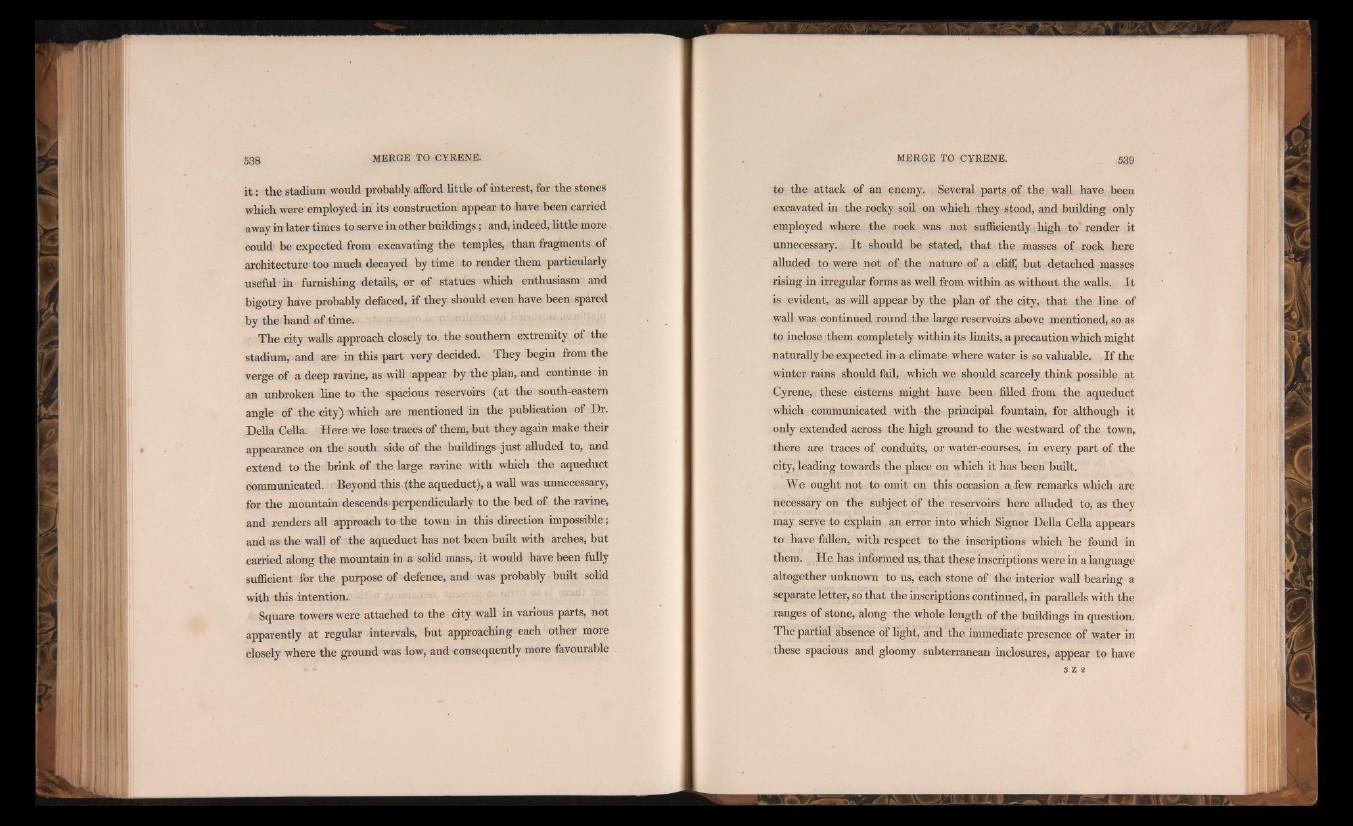
i t : the stadium would probably afford little of interest, for the stones
which were employed in its construction appear to have been carried
away in later times to serve in other buildings; and, indeed, li ttle more
could be expected from excavating the temples, than fragments of
architecture too much decayed by time to render them particularly
usefulin furnishing details, or of statues which enthusiasm and
bigotry have probably defaced, if they should even have been spared
by the hand of time.
The city walls approach closely to. the southern extremity of the
stadium, and are: in this part very decided. They begin from the
verge of a deep ravine, as will appear by the plan, and continue in
an unbroken line to the spacious reservoirs (at the-'south-eastern
angle of the city) which are mentioned in the publication of Dr.
Della Celia. Here we lose traces of them, but they again make their
appearance on the south side of the buildings just alluded to, and
extend to the brink of the large ravine with which the aqueduct
communicated. Beyond this (the aqueduct), a wall was unnecessary,
for the mountain descends perpendicularly to the bed of the ravine,
and renders all approach to the town in this direction impossible;
and as'the wall of the aqueduct has not been built with arches, but
carried along the mountain in a solid mass, it would have been fully
sufficient for the purpose of defence, and was probably built solid
with this intention.
Square towers were attached to the city wall in various parts, not
apparently at regular intervals, but approaching each other more
closely where the ground was low, and consequently more favourable
to the attack of an enemy. Several parts of the wall have been
excavated in the rocky soil on which :they Stood, and building only
employed where the rock was not sufficiently. high to render it
unnecessary. I t should be stated, that the masses of rock here
alluded to were not of the nature of a cliff but detached masses
rising in irregular forms as well from within as without the walls. It
is evident, as will appear by the plan of the city, that the line of
wall was continued round the large reservoirs above mentioned, so as
to inclose them completely within its limits, a precaution which might
naturally be expected in a climate where water is so valuable.. If the
winter rains should fail, which we should, scarcely think possible at
Cyrene, these cisterns might have been filled from the aqueduct
which communicated with the principal fountain, for although it
only extended across the high ground to the westward of the town,
there are traces of conduits, or water-courses, in every part of the
city, leading towards the place on which it has been built.
We ought not to omit on this occasion a,few remarks which are
necessary on the subject of the reservoirs here alluded to, as they
may serve to explain an errpr into which Signor Della Celia appears
to have fallen, with respect to the inscriptions which he found in
them. He has informed us, that these inscriptions were in a language
altogether unknown to us, each stone of the interior wall bearing a
separate letter, so that the inscriptions continued, in parallels with the
ranges of stone, along the whole length of the buildings in question.
The partial absence of light, and the immediate presence of water in
these spacious and gloomy, subterranean inclosures, appear to have